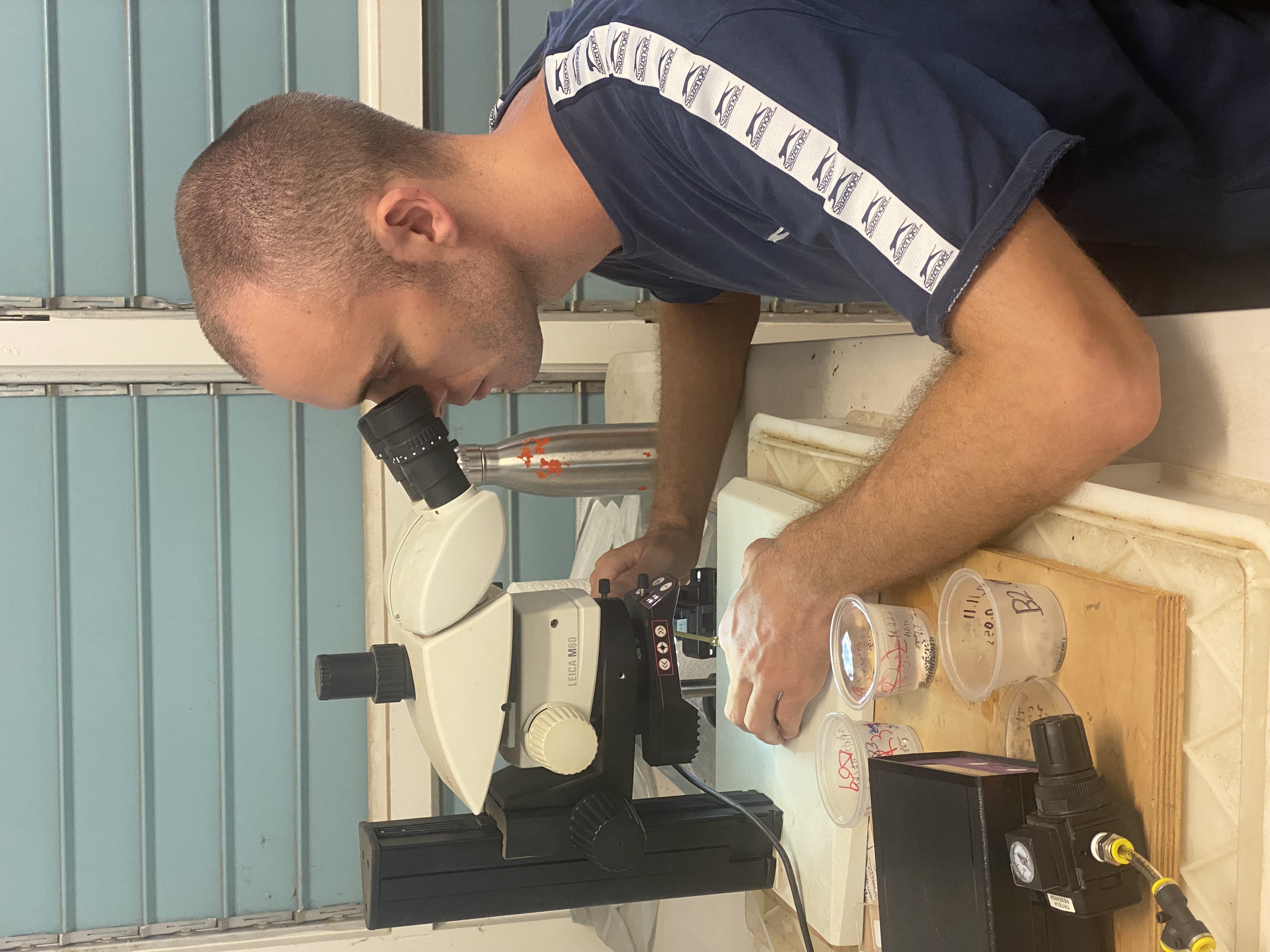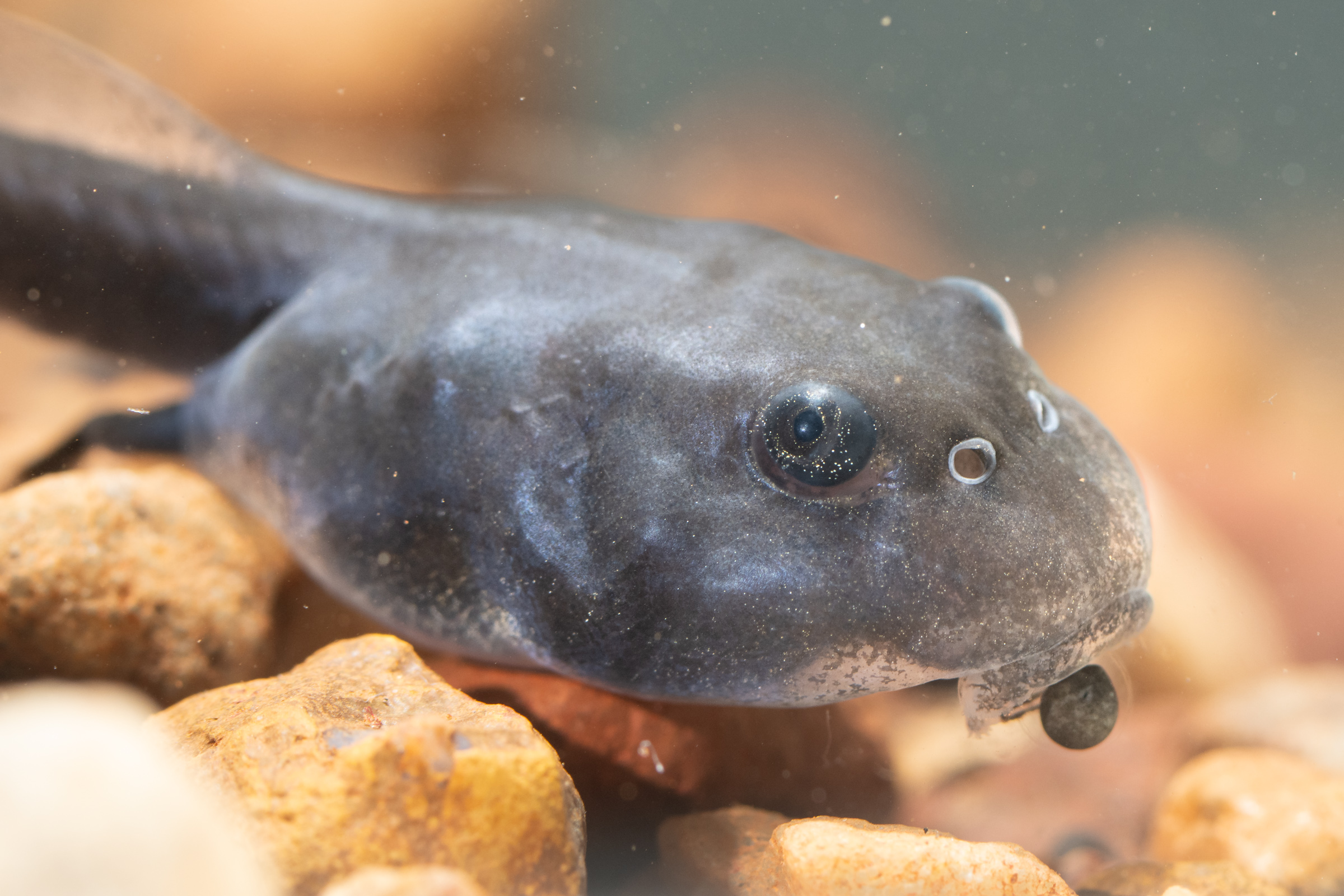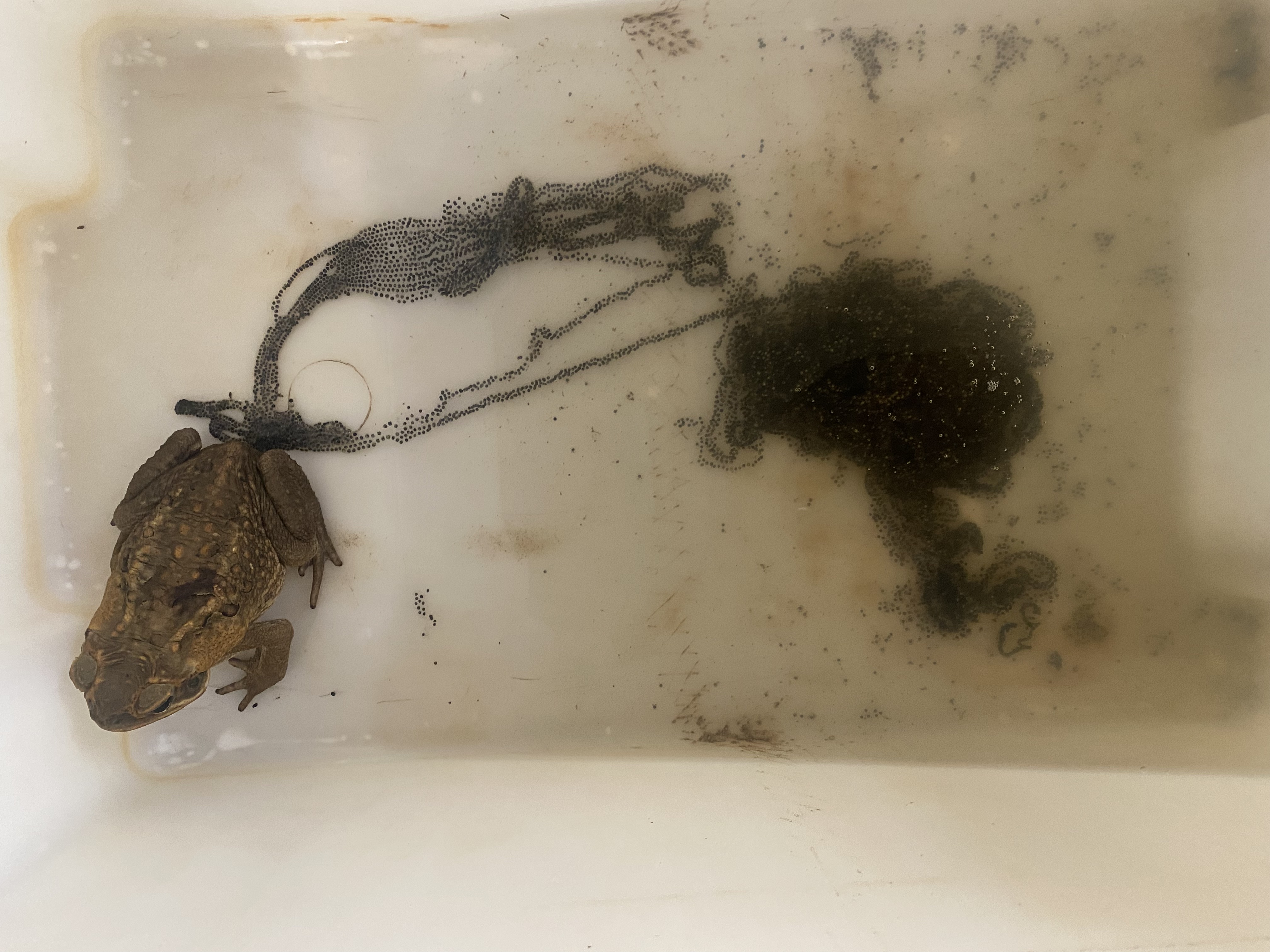Genetic Methods
As we explain in our page about the third generation of Team Bufo, we are exploring an exciting new approach to toad control. By injecting fluid into a newly-laid toad egg, we can disable a specific gene. The method is called CRISPR-Cas9. Except for blocking the action of that target gene, the toads and toad tadpoles we produce using CRISPR-Cas9 are identical to the toads hopping around in the bushland or toad tadpoles swimming around our waterways.. The change is just like a normal mutation – a “copying error” that occurs frequently in nature.
Many people think that if you interfere with an animal’s genes, you produce a “genetically modified organism” (GMO) that might have dangerous ecological consequences. For example, the new gene you inserted might spread through the population and be unstoppable, or might jump from one species to another. For this reason, Australian law prohibits any release of GMOs except in special highly-regulated cases, such as in commercial cotton-growing.

Although the genetic methods are sophisticated, the actual procedures are simple and can be done even at our field station. Here, Michael Clark is injecting newly-laid toad eggs with CRISPR-Cas9 fluid to block metamorphosis. Photograph by Rick Shine.
But Team Bufo’s approach is much simpler. We just disable a gene. We don’t add anything new, so we don’t produce any GMOs. That sounds peculiar - we have genetically modified the organism (by knocking out a gene), so why doesn't this qualify as a "genetically modified organism" (that is, an official GMO)? The answer is that the Australian government has looked into this issue carefully, and has set up an expert advisory body called the Office of the Gene Technology Regulator to rule on what is a GMO and what isn't. They have concluded that just knocking out a gene doesn't qualify, because the end product of a knock-out is identical to that caused by a natural process - that is, mutation - that happens constantly in every species. To build a GMO, you need to introduce genetic material from one type of organism into another kind of organism.
In our work with cane toads, we don’t mix genes from different individuals or different species. All we do is remove the ability to produce poison, or to grow large, or to transform from a tadpole into a toad. In every other way, the toads we produce using CRISPR-Cas9 are identical to the tadpoles swimming around in the billabongs, or the toads hopping around in the bushland.
How can knocking out a gene help us to control cane toads? There are lots of possibilities. For example, a toad that doesn’t produce much poison, and that never grows very large, can be the perfect “teacher toad” to educate vulnerable predators not to eat toads. The CRISPR-modified toad is much safer than using “normal” toads for this purpose, because our mutant toad is toxic enough to train predators but not toxic enough to kill them, even if it survives to grow old.
Even more exciting, we can use cane toads to control their own populations. This approach is based on two important things we know about the tadpoles of cane toads. First, they have very little poison and so are not a threat to native wildlife (unlike the poison-rich eggs and adult toads). Second, cane toad tadpoles are voracious cannibals. They love to eat the eggs of their own species, but are not interested in eating eggs of native frogs.

A Peter Pan tadpole enjoying lunch - in this case, a newly-laid toad egg. Photograph by Etienne Littlefair.
Because of this cannibalism, plus chemical warfare by tadpole against eggs of their own species, a cane toad tadpole is a toad egg’s worst enemy. In our field studies, any toad egg laid into a pond that already contains toad tadpoles is very unlikely to survive. Incredibly, we recorded egg mortality rates of well over 99%! As a result, a new clutch of eggs can only survive after the older tadpoles have finished transforming into baby toads and have left the pond.
Rick’s idea was to stop those tadpoles from leaving the pond, by disabling the gene that enables them to transform from a tadpole to a toad. That gene enables a tadpole to produce the hormone required to trigger the switch from tadpole to toad. Without that hormone, the tadpole just keeps swimming around, retains its tail, never grows front legs – and in short, lives all of its life as a tadpole. As a result, it can never breed.
Because a tadpole can’t reproduce, the CRISPR-Cas9 gene knockouts can never spread. That removes the risk that makes people wary of GMOs. Instead, we have a tadpole that is normal in every way except that it can never turn into a toad. We call these tadpoles “Peter Pans”, after the fairytale character who never grows up.

We injected this toad with hormones to induce egg-laying. We then use those eggs for our CRISPR-Cas9 work. Photograph by Rick Shine.
To be crystal-clear about this important issue: TEAM BUFO is using a simple and safe approach. We will simply REMOVE a chunk of DNA, not add anything new. This kind of mutation happens frequently in nature. Every clutch of cane toads contains a few tadpoles that never transform into toads. Because tadpoles can’t breed, the knockout can’t spread through the population.
